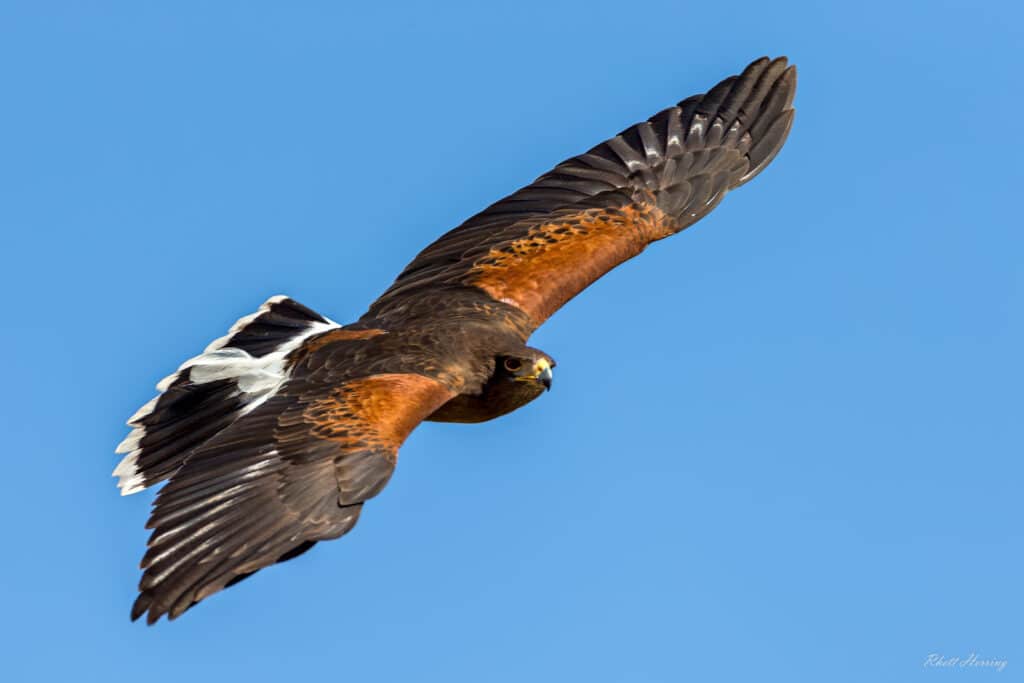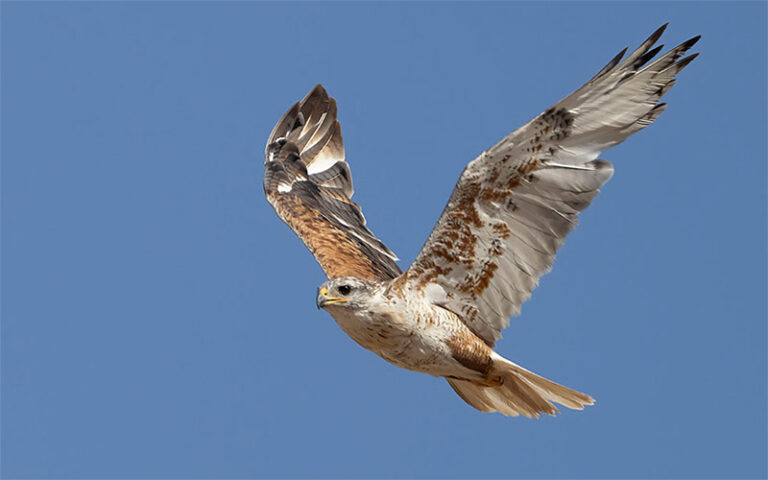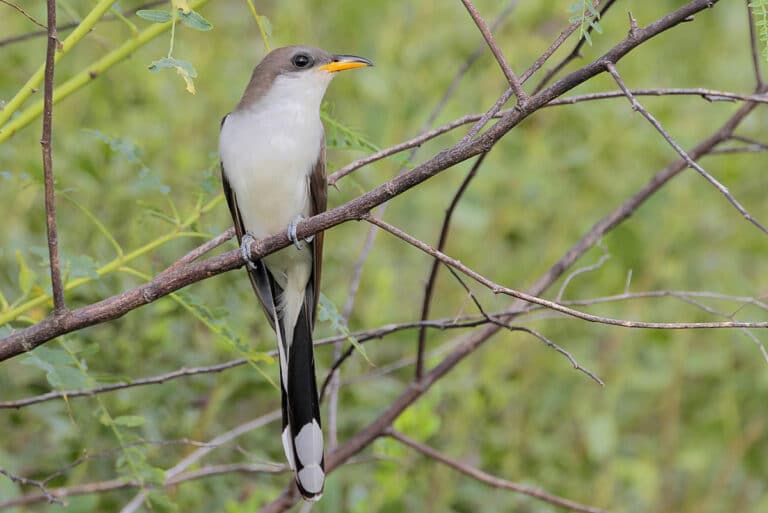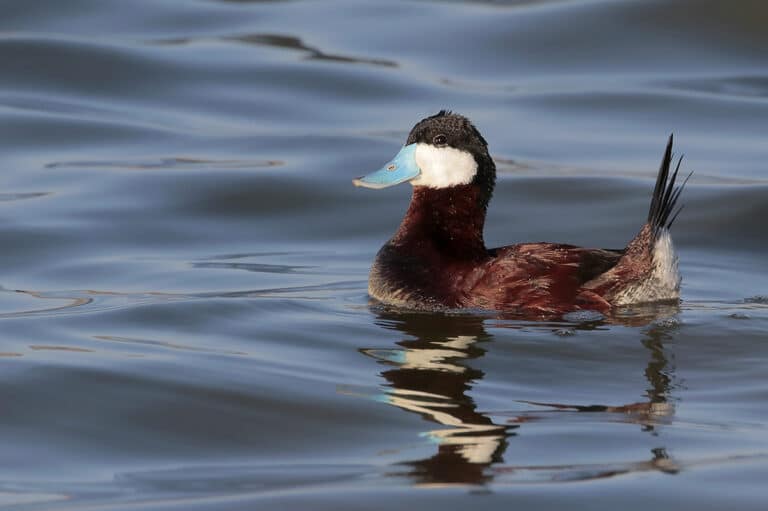The Sonoran Desert is home to the most social of North American raptors, the Harris’s Hawk. If you’ve been to the Raptor Free Flight program at the Arizona-Sonora Desert Museum, you might have an idea of what it feels like to be the desired prey in the middle of a group of hungry hawks. These “wolf packs of the skies” use some of the most sophisticated cooperative hunting strategies in the bird world. A hunt usually starts with an “assembly ceremony” where 3–9 birds assemble and perch together, sometimes all on one branch or on the back of another to gain height or take over the perch (backstanding). The typical hunting strategies of Harris’s Hawks have been identified as: the surprise pounce, when several hawks simultaneously attack prey from different directions; flush-and-ambush, one or more hawks fly into dense cover while other birds attack when the prey is flushed; and the relay attack, when the lead chase position is alternated among birds during a long run-down of prey, usually a rabbit. Interestingly, even though Harris’s Hawks are also found in open woodlands and savannas throughout Mexico and South America, it may be that only the Sonoran Desert birds hunt cooperatively.
Not only do Harris’s Hawks hunt together, they nest together in social units that can include adults and immature birds and have been recorded as having eggs or young in every month of the year. Their group perching behavior makes these hawks very susceptible to electrocution in urban areas. Power companies such as Tucson Electric Power have instituted programs to make poles safer with modifications. Harris’s Hawks can be found in Tucson sporadically, usually where there are very large trees to nest in. If you find multiple hawks together, chances are they are part of a wolf pack of the skies!
Image by Rhett Herring




